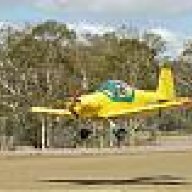-
Posts
6,616 -
Joined
-
Last visited
-
Days Won
31

Yenn replied to Markdun's topic in Student Pilot & Further Learning

Yenn replied to turboplanner's topic in Aircraft Incidents and Accidents

Yenn replied to Old Koreelah's topic in Aircraft Incidents and Accidents

Yenn replied to APenNameAndThatA's topic in Student Pilot & Further Learning

Yenn replied to KRviator's topic in Aircraft Incidents and Accidents

Yenn replied to lyle janke's topic in Engines and Props

Yenn replied to lyle janke's topic in Engines and Props

Yenn replied to lyle janke's topic in Engines and Props

Yenn replied to lyle janke's topic in Engines and Props

Yenn replied to KRviator's topic in Aircraft Incidents and Accidents

Yenn replied to KRviator's topic in Aircraft Incidents and Accidents

Yenn replied to KRviator's topic in Aircraft Incidents and Accidents

